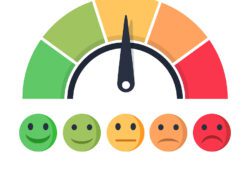As of 2024, the digital landscape has continued its rapid evolution, with user-generated content (UGC) as a powerful tool in modern marketing strategies. UGC refers to any form of content created by users rather than by the brand itself—photos, videos, reviews, blog posts, or social media updates. With consumers increasingly seeking transparency, brands leveraging UGC have discovered a direct line to building trust and authenticity with their target audience.
The Rise of UGC in the Age of Social Media
The numbers tell a compelling story. As of July 2024, 5.45 billion people were using the internet, representing 67.1% of the global population. Among them, 5.17 billion people—or 63.7% of the world’s population—were social media users. As hubs of personal expression and conversation, social media platforms have naturally become the most fertile ground for UGC.
Consumers constantly interact with brands on these platforms, engaging in activities ranging from simple likes and shares to creating content showcasing products or services. 49% of U.S. consumers reported that they frequently “liked” posts by other users or followed people on social media, further amplifying the content’s reach. With platforms like Instagram, Facebook, TikTok, and YouTube leading the charge, the reach of UGC is immense, and its impact on brand perception is growing stronger by the day.
This shift in power from brand-controlled narratives to consumer-driven content redefines how marketing strategies are formulated. Brands can no longer rely solely on polished advertising campaigns. Instead, they must tap into the organic conversations around their products, services, and values. UGC offers a unique advantage here—authenticity. Consumers trust other consumers far more than they trust marketing materials. This trust is reflected in statistics showing that customer reviews are now among the most essential sources of information for online shoppers.
The Authenticity Factor
Authenticity is the key driver behind UGC’s success. In an era when consumers are bombarded with highly produced and scripted content, UGC’s raw, unfiltered nature stands out. Whether it’s a photo of a product shared on Instagram, a YouTube review, or a post in a discussion forum, real user experiences tend to resonate more deeply with potential buyers.
One of the clearest examples of this can be seen in the beauty and personal care industry. In the second quarter of 2024, one of the most reviewed products on Amazon was the Essence Lash Princess False Lash Effect Mascara, which accumulated around 337,000 reviews. These reviews, often accompanied by images or videos showcasing real-world product use, create a feedback loop where consumers rely on each other’s experiences to inform their purchasing decisions. The impact of such UGC is undeniable; products with high numbers of positive user reviews tend to enjoy higher sales and better brand loyalty.
Social platforms like Instagram and TikTok also continue to shape how UGC influences brand perception. Instagram, with over 672 million followers on its platform and users like Cristiano Ronaldo, commanding an audience of 628 million, is a significant driver of UGC. As people share posts, stories, and reels, they offer unfiltered opinions, directly influencing their followers’ perceptions of brands. Similarly, TikTok has revolutionized content sharing by allowing personal accounts to generate millions of views, further amplifying the reach of UGC.
UGC and the Consumer Journey
The influence of UGC spans the entire customer journey—from awareness to purchase. According to a 2024 survey, 52% of U.S. respondents cited search engines like Google as their primary source of product information. However, 31% also highlighted customer reviews as a critical factor in their decision-making process, underscoring the importance of UGC in driving purchasing decisions. Moreover, 63% of beauty shoppers in the U.S. reported always reading reviews before purchasing online. This behavior is particularly prevalent in industries like beauty, electronics, and travel, where personal recommendations hold significant weight.
Platforms like Tripadvisor have built entire ecosystems around UGC in the travel industry. By 2023, Tripadvisor had accumulated over one billion user reviews and ratings worldwide, covering a wide range of travel-related experiences, including accommodations, restaurants, and tourist activities. These reviews provide a real-time pulse on consumer sentiment and help shape the decisions of millions of potential travelers.
UGC also plays a critical role in the awareness stage of the consumer journey. Social media platforms, particularly Instagram and TikTok, are top sources of inspiration for discovering new products. A 2024 survey revealed that 44% of U.S. consumers used social media to find new products, while 43% relied on recommendations from friends and acquaintances. This highlights the symbiotic relationship between social media and UGC, as their peers’ online content constantly inspires users.
The Impact of Visual Content
While text-based reviews are powerful, visual UGC is increasingly shaping consumer behavior. Platforms like TikTok and Instagram are visual-first, and the engagement on these platforms proves that visual UGC has an even more significant impact. TikTok, for example, has become one of the most popular platforms for video content, where personal TikTok accounts consistently generate more views than business accounts. This trend speaks to the trust users place in content created by individuals over that brands produce.
On TikTok, users frequently share experiences with products in relatable and entertaining ways, whether through short-form videos or collaborative challenges. By April 2023, Barcelona was one of the most TikTok-viewed cities, amassing over 106 billion views of videos tagged with the city’s name. This kind of user-driven content serves as a source of entertainment and a way for brands to tap into authentic experiences shared by users, thereby amplifying their reach.
According to the Merca2.0 research department, YouTube remains a dominant platform for UGC, with over 500 hours of video uploaded every minute as of 2022. From tutorials and unboxing to in-depth product reviews, user-generated videos continue to inform and influence buying decisions across various industries. Gaming content is viral on YouTube, where creators like PewDiePie boast over 111 million subscribers, showcasing the power of UGC in niche communities.
Consumer Expectations for Authenticity
As UGC grows, so do consumer expectations. Consumers now expect brands to feature user-generated content and actively engage with it. For instance, platforms like BeReal have capitalized on the desire for authenticity, allowing users only a brief window to capture and share a photo, free from filters and edits. In a survey, 34% of U.S. BeReal users agreed that the platform felt more authentic than traditional social media platforms, further emphasizing the growing importance of authenticity in digital spaces.
This expectation of authenticity is not limited to social media platforms. Brands must now find ways to incorporate UGC into their marketing strategies in genuine ways. Whether through reposting user content, creating dedicated hashtags, or running UGC-centered campaigns, brands can leverage the power of their customers to create authentic content that resonates more deeply with potential buyers.
The Future of UGC
As the digital world evolves, UGC will likely become even more central to marketing strategies. Social media penetration worldwide is expected to reach 75.31% by 2028, meaning more consumers will interact with brands online, create content, and influence purchasing decisions. This growing digital population will also continue to push the boundaries of how brands can engage with users and build trust through UGC.
Furthermore, as new technologies emerge—such as AI-driven content creation and augmented reality—UGC will take on new forms. Platforms like YouTube Shorts and TikTok already have integrated AI features, helping users create more dynamic and engaging content. Brands that embrace these changes and encourage their users to participate in content creation will find themselves at the forefront of digital engagement.
In conclusion, UGC is more than just a trend—it is a fundamental shift in how brands and consumers interact. Authenticity, transparency, and trust are the pillars of this new era, and brands prioritizing UGC will continue building stronger, more meaningful relationships with their audiences. As consumers take greater control of the narrative, UGC will remain a critical tool for brands looking to thrive in a digitally connected world.










